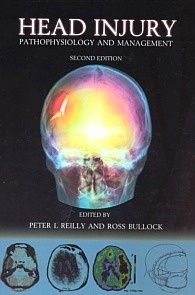Reseña o resumen
Introduction to Clinical Aspects of the Autonomic Nervous System: Sixth edition, Volume Two is an all-encompassing reference to the autonomic nervous system's function, dysfunction and pathology. This updated volume describes the role of the autonomic nervous system in circadian rhythms, sleep and wakefulness, aging, exercise, and its role in pain perception. Additional chapters focus on disorders causing autonomic dysfunction, including spinal cord injuries, autonomic neuropathies, trophic disorders, progressive autonomic failure, autonomic adaptations in space and hypoxia, and autonomic testing in the laboratory. This book will help readers become well-equipped to care for patients with autonomic disorders and guide research endeavors.
Cover image
Title page
Table of Contents
Copyright
Foreword
Acknowledgments
Introduction
Chapter 1. Circadian rhythms
Abstract
1.1 Introduction
1.2 Effect of light on the circadian system
1.3 Effects of melatonin on the circadian system
1.4 Other circadian rhythms in human
1.5 Aging and circadian rhythms
1.6 Circadian disturbances and the COVID-19 pandemic
1.7 Molecular and circuit-based aspects of the circadian system
1.8 Circadian system and neurodegeneration
References
Chapter 2. Sleep and wakefulness
Abstract
2.1 Introduction
2.2 Normal sleep physiology
2.3 The neurobiology of wakefulness and sleep
2.4 Rapid eye movement sleep and rapid eye movement sleep behavior disorder
2.5 Sleep deprivation
2.6 Excessive sleep
2.7 Abnormal apneic periods during sleep
2.8 Neurodegeneration and sleep
2.9 Treatment of sleep disorders
2.10 Some nocturnal disorders associated with various stages of sleep
References
Chapter 3. The pupil
Abstract
3.1 Anatomy and physiologic function of the pupil
3.2 Disordered pupillary function
References
Chapter 4. Trophic disorders
Abstract
4.1 Congenital absence of muscles
4.2 Congenital neuromuscular disorders with localized weakness
4.3 Congenital neuromuscular disorders associated with contractures and deformity about joints
4.4 Disorders affecting the skin and subcutaneous tissue
4.5 Trophic disorders appearing after birth
4.6 The influence of the nervous system on the triple response of Lewis
4.7 The influence of the nervous system on myoedema
4.8 Lesions of the peripheral nervous system
4.9 Neuroarthropathies
4.10 Hypertrophic osteoarthropathy (Bamberger Marie syndrome)
4.11 Interactions between central and peripheral neurons and their target tissues
References
Chapter 5. Pain perception and the autonomic nervous system
Abstract
5.1 Causalgia
5.2 Reflex sympathetic dystrophy complex regional pain syndrome
5.3 Hyperalgesia
5.4 Raynaud phenomenon
5.5 Pathophysiology
5.6 Associated disorders
5.7 Autonomic faciocephalalgia (Hortons syndrome, histaminic cephalalgia, and cluster headaches)
5.8 Raeder's syndrome (paratrigeminal syndrome)
5.9 Referred pain
5.10 Erythromelalgia
5.11 Baroreceptor function and pain perception
References
Chapter 6. Biofeedback and operant conditioning
Abstract
6.1 Interoception
References
Chapter 7. Aging and exercise
Abstract
7.1 Aging and the autonomic nervous system
7.2 Exercise and the autonomic nervous system
7.3 Exercise and aging
References
Chapter 8. Autonomic neuropathies
Abstract
8.1 Blood supply to peripheral autonomic nerves
8.2 Pathogenesis of autonomic failure in peripheral nerve disease
8.3 Innervation of vasa nervorum and the nervi nervorum in human sural nerves
8.4 Human autonomic neuropathies
References
Chapter 9. Progressive autonomic failure
Abstract
9.1 Progressive autonomic failure autonomic dysfunction in synucleinopathies
9.2 Progressive autonomic failure others
References
Chapter 10. Spinal cord injuries
Abstract
10.1 Introduction
10.2 Autonomic dysreflexia
References
Chapter 11. Autonomic adaptation to hypoxia: mountain medicine
Abstract
11.1 Cardiovascular function at altitude
11.2 Cerebrovascular function at altitude
11.3 Oxygenation during exercise in Tibetan and Han-Chinese
11.4 Sleep
11.5 Neuropeptides, altitude, and exercise
11.6 Water and electrolytes
11.7 Autonomic reflexes and altitude
11.8 Circulating catecholamines
11.9 Thermoregulatory and vasomotor effects of high altitude
11.10 Altitude hypoxia: exercise and cardiovascular responses
11.11 Pentoxifylline
11.12 Clinical effects of altitude exposure
11.13 Freestyle neurology
References
Chapter 12. The autonomic nervous system in space exploration
Abstract
12.1 Introduction
12.2 Fluid shifts during spaceflight
12.3 Changes in blood volume with microgravity
12.4 Autonomic function testing
12.5 Deconditioning and miscellaneous autonomic manifestations
12.6 Altered central processing and brain changes in space
12.7 Simulated microgravity
12.8 Postflight autonomic changes
12.9 Space motion sickness and disruption of vestibular-autonomic reflexes
12.10 Bed rest deconditioning and orthostatic intolerance
12.11 Effects of sex and gender on adaptation to space
12.12 Countermeasures to combat orthostatic intolerance
12.13 Brain and blood changes in humans during prolonged isolation
References
Chapter 13. Testing autonomic function
Abstract
13.1 Key concepts
13.2 Tests of cardiovascular autonomic function
13.3 Efferent sympathetic pathway testing
13.4 Chemoreceptor testing (hypoxic ventilatory drive)
13.5 Sudomotor testing
13.6 The flare component of the triple response of Lewis
13.7 Testing pupillomotor function
13.8 Imaging techniques and autonomic disorders
13.9 Testing genitourinary function
13.10 Testing gastrointestinal function
13.11 The autonomic laboratory
13.12 Autonomic tests
References
Further reading
Chapter 14. Other forms of autonomic dysfunction
Abstract
14.1 The autonomic nervous system and COVID-19
14.2 Historical aspects
14.3 Long COVID syndrome long haulers
14.4 Other COVID-associated syndromes
14.5 Orthostatic intolerance focus on postural tachycardia syndrome
14.6 Clinical features
14.7 Phenotypes of postural tachycardia syndrome
14.8 Management
References
Index

